Ultimate beginner’s guide to pawns (with pictures!)
The pawn is the simplest and even considered the weakest unit in Chess. This is due to its low range and mobility (only one square at a time). But at the same time, has the greatest potential to convert a losing game into a winning one.
The special moves are as follows:
1.) The pawn can move 2 squares at the beginning of the game
The pawn can choose to move a total of two square if ever the said pawn has never moved before. Take a look at the diagram:
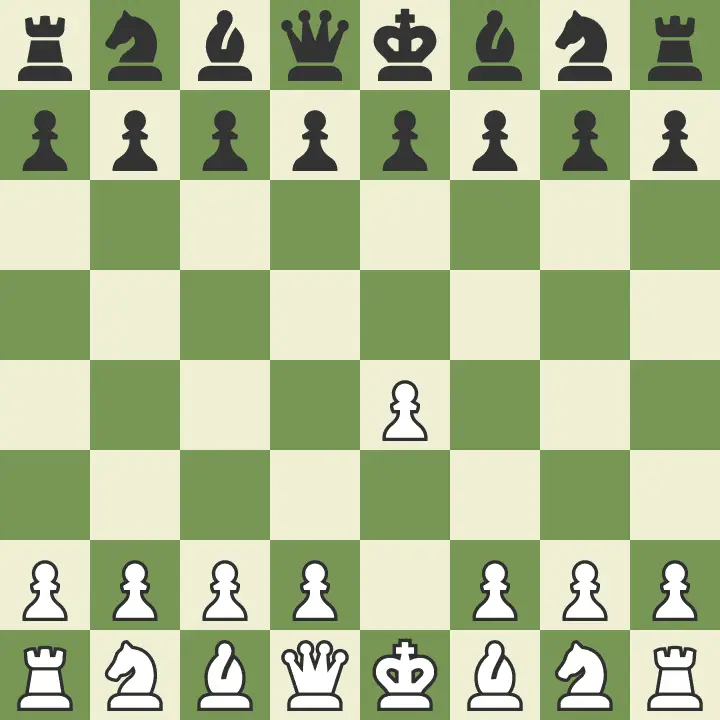
You can see that white played e4 ( it’s the name of the move). A pawn can only move one tile forward. But it has moved two. This two tiles’ initial advance is actually a special rule where a pawn can move two tiles if it has never moved before.
It was put in place to allow pieces to be developed much quickly earlier in the game. The pawns after all block most of the pieces from being developed at the start of the game. This rule speeds up the process to get things going.
The player can choose to only move at 1 tile initially
A pawn can choose to move two tiles forward but it doesn’t necessarily mean that the pawn cannot move by only a one tile. This picture demonstrates that:
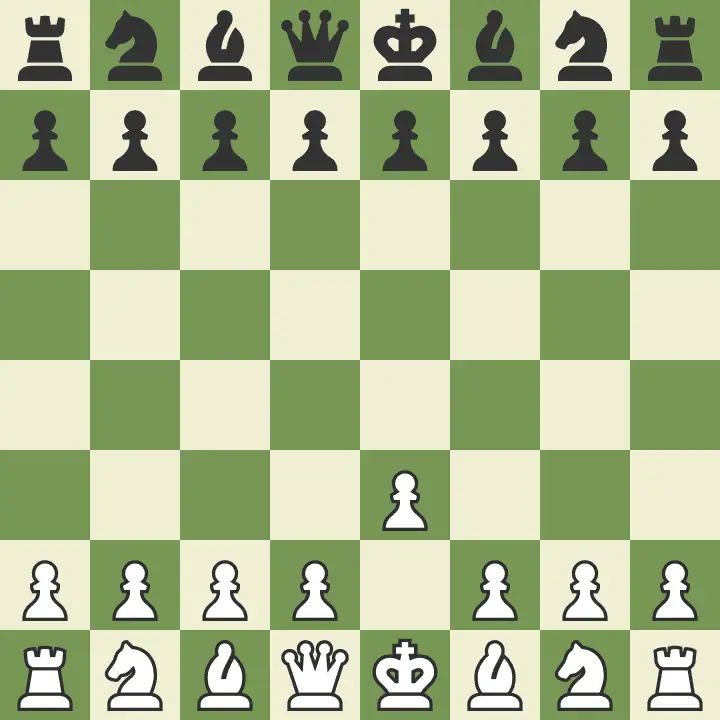
As you can see, I was able to move the pawn at e3. Even though I have the option to move it forward through two spaces.
A player can choose to move the pawn by either one or two depending on the situation. This is so that tactics around one tile pawn advances don’t get compromised because of the special rule.
A moved pawn canot move two space forward
The pawn can choose to move two spaces only if it has never moved before. This means that pawns that have move one tile or two tiles before will lose their ability to move by two tiles. Look at this picture:
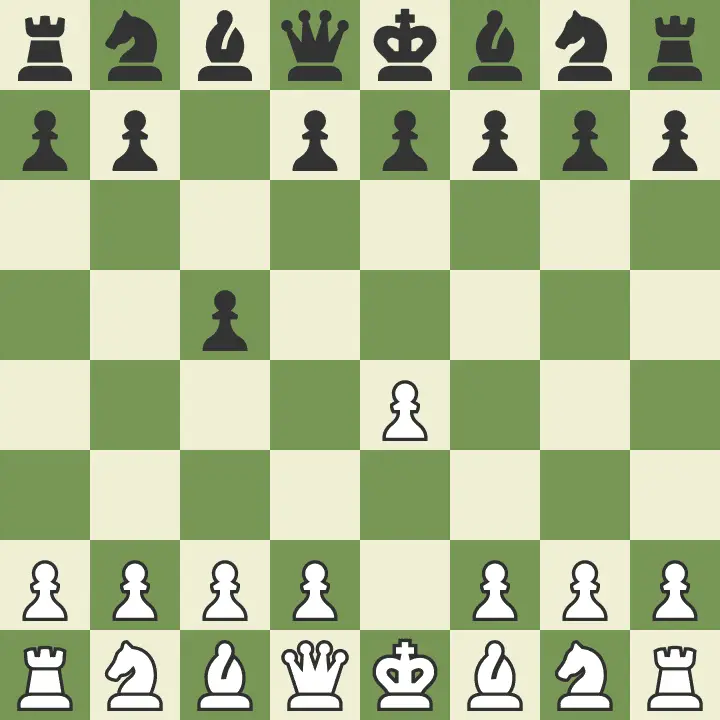
It’s white turn to move and therefore can choose a pawn or piece to play. If I choose to move the pawn on e4 (the white pawn right at the center). It can only move at e5 (one tile forward). Here it is:
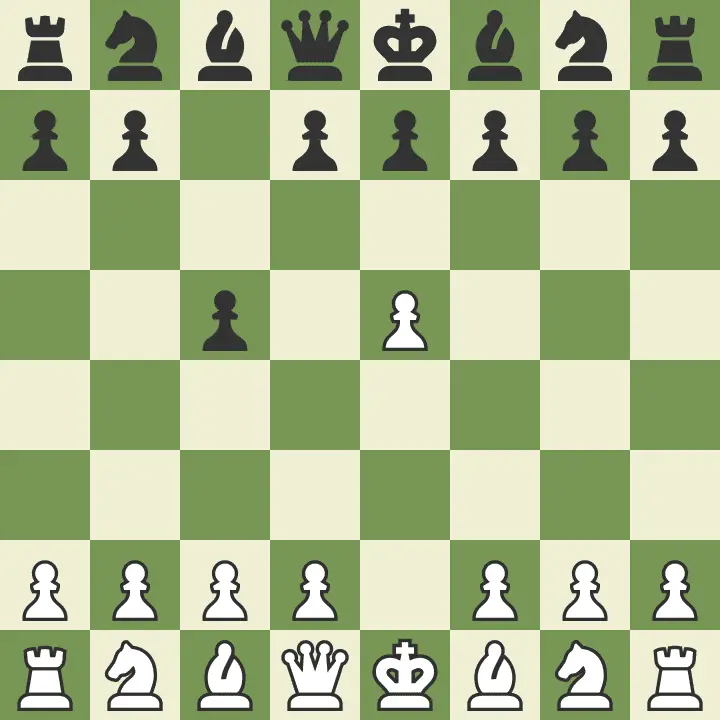
The advanced pawn in this case cannot move by another two tiles since it has moved before. Therefore losing its ability to move two tiles forward. That pawn at the center can never move two spaces again. It can only move one for the rest of the game.
Pawns that have never moved can move 2 space forward
We’ve already established how a pawn that has moved before will lose its ability. This however only applies to that particular pawn. It means that all the pawns are explicit to each other.
Meaning I can still move other pawns in a two-tile advance. Look at this example:
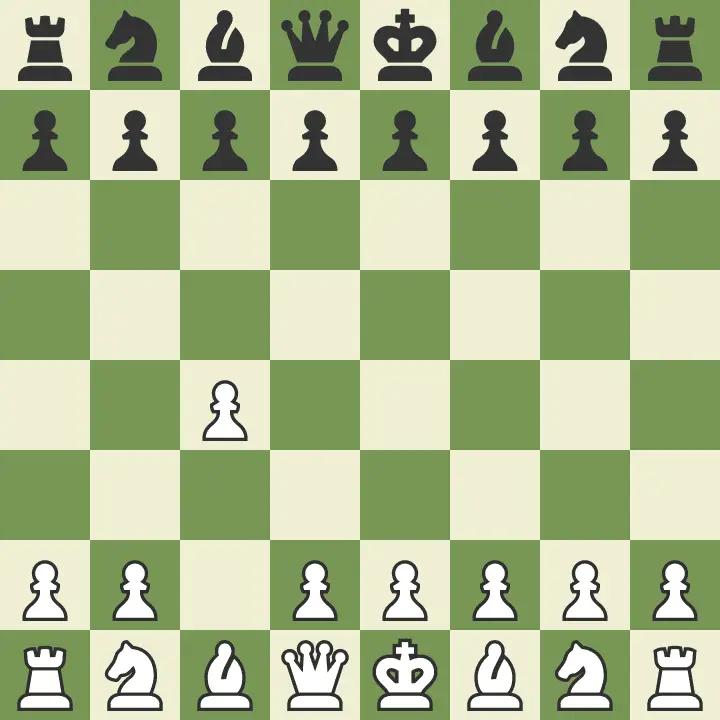
Here, the pawn has moved to c4 (it’s the name of that move). This pawn will lose its ability to move another two tiles, yes. But it does not apply to every other pawn. Look:
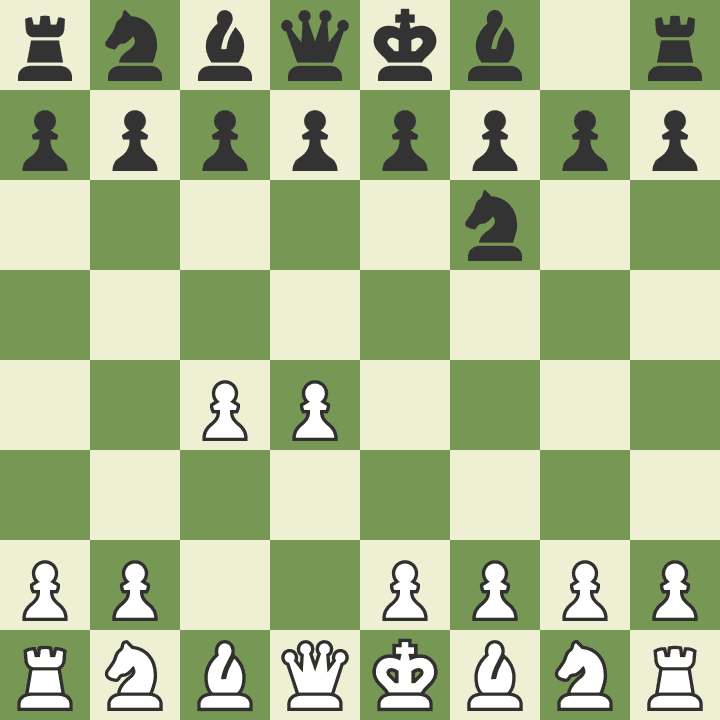
After black played kf3 or “Knight to f3” (again, a name for that move). White can still play d4 (the pawn that moves two tiles in front of the Queen).
Meaning, all the other pawns can still move two tiles. Even though those that have moved have lost their ability.
One tile dilemma
A pawn that has moved one tile would also lose its ability to move two spaces. Even though it hasn’t used its ability yet, it has moved before. So it is considered a pawn that “moved”.
Therefore losing its ability to move for two tiles the rest of the game. Just look here:
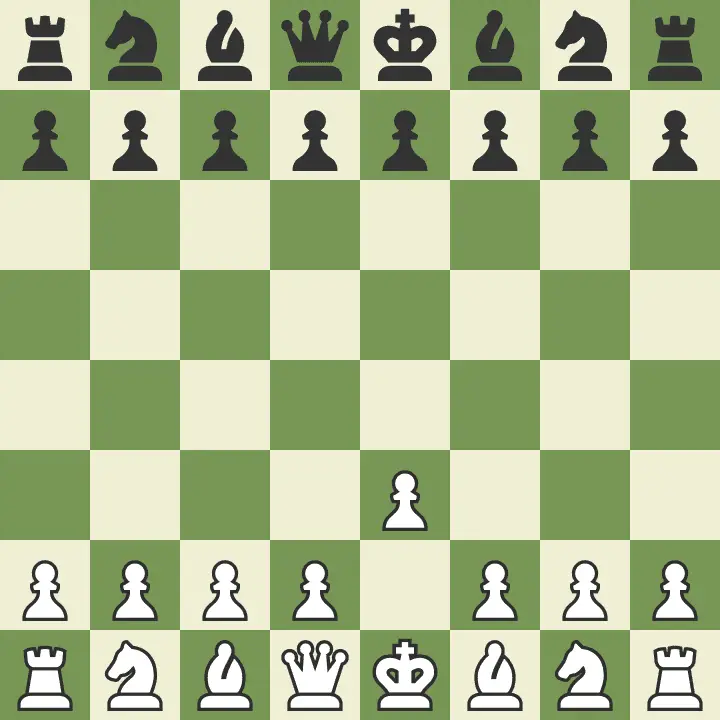
It’s white to move and the pawn on e3 (the one that got advanced) has only moved one tile. This pawn has moved “before” even though it’s only by 1 tile. So if i choose to move it this turn like this:
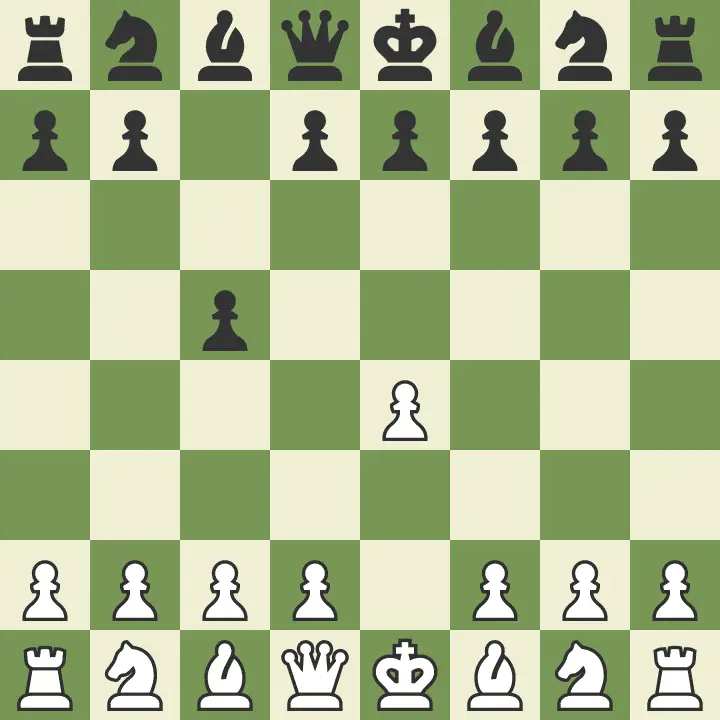
It can only move it to e4 (the tile where it’s at). I can’t take another two spaces forward This applies for the rest of the game. Even if I didn’t get to move two tiles on my first try.
2.) Pawns only capture diagonally
The pawn can capture on one space diagonal on its side going forward. It can only capture a total of two spaces. Look at this:

The white pawn in this example can capture both of these pawns. It can only capture this way and nothing else.
The only special rule that breaks this would be the en passant which we will discuss later. There’s actually an interesting idea about the pawn capturing backward.
It’s from an article I wrote which you can click here (will open in a new tab). Check it out, where I’ve gone deep in explaining the backward concept.
That is how the pawn captures. But I mean it can move forward, right? Shouldn’t it be able to capture that way?
Pawns cannot capture forward
Surprisingly, unlike any other piece in Chess (not that a pawn is called a piece). The pawn cannot capture on the tiles where can move. It can only move forward, but at the same time can only capture from the spaces mentioned above.
Here’s an example:
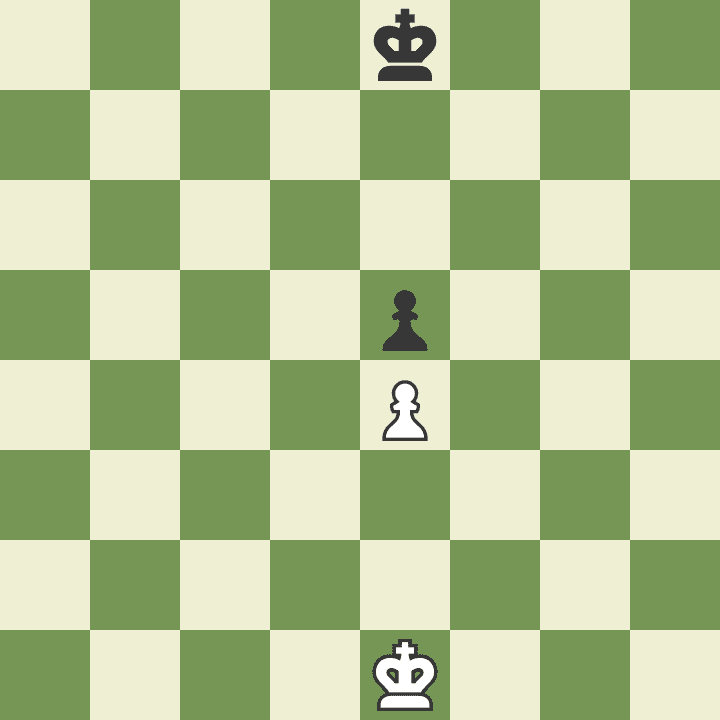
Both of the pawns in this case cannot capture each other. This is due to the fact that they can only capture from the upper tiles going forward.
The pawn actually blocks each other from advancing. Such pawns can never move unless the blockade gets lifted.
Means that a pawn gets eliminated. So, what if the pawns do not have opposing pawns from each side going forward?
Passed pawns in chess
A passed pawn is a pawn that doesn’t have an opposing pawn able to meet it going forward. There are no pawns in its capture tiles (single diagonal space forward) as well as the advancing tiles (vertical section of the board where the pawn can advance).
The picture below demonstrates passed pawns:

There are a total of four pawns (counting the opponent’s) on the board. All of them are considered a passed pawn. Since there aren’t any opposing pawns that could intercept each side’s pawn.
This is true for both of them. Take note that the way to identify passed pawns is based on the opponent’s pawn not any piece.
This means that a pawn blockaded by a piece. Is still considered a passed pawn. Since a piece can’t really afford to take a pawn. It’s unlikely that any other piece will have an easy time picking the pawn. They can, but they will have a harder time.
Pawns can only switch files after a capture
Files are columns that go up and down the chessboard. This is a good indicator of how the pawn advances throughout the game. As I’ve talked about before, the pawn can only move forward. This means that it can’t change files, or can it?
It can actually since the pawn can capture from its sides! Dig into this sample:
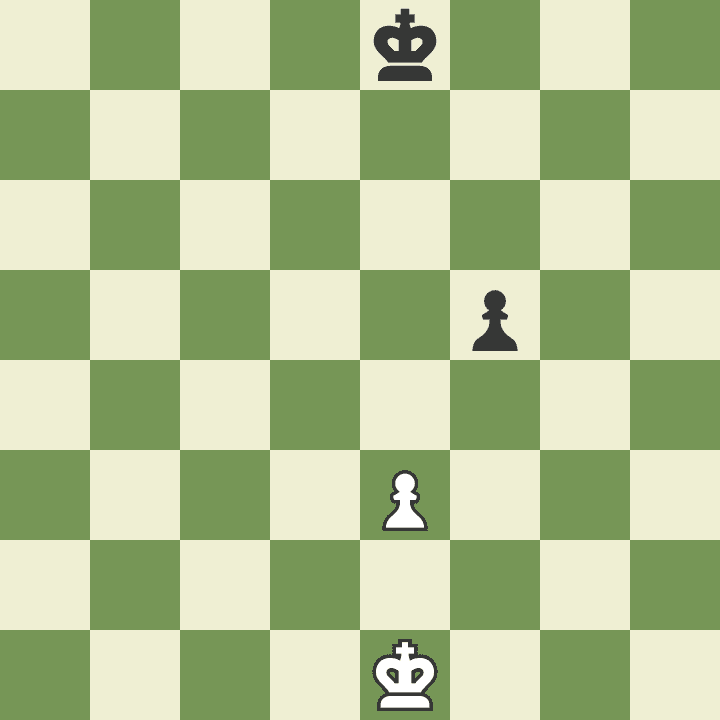
The white pawn in this case can only move forward. It can never belong to another file unless it initiates a capture. Look at this:
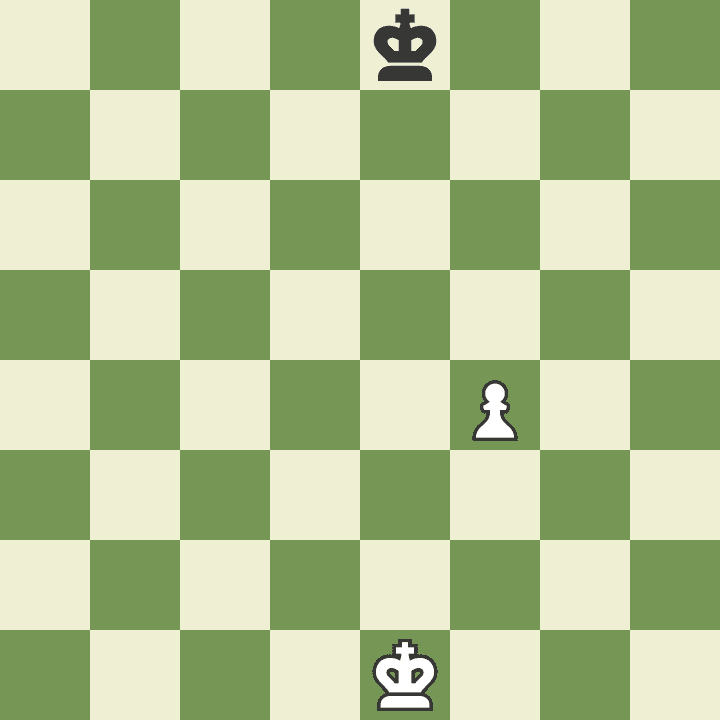
The white pawn just captured the opponent’s pawn. This in turn allows it to switch files. Meaning the pawn that is limited from the previous file. Has now transitioned to another file through that capture.
The pawn now belongs to that file. It can never be switched into another file again unless another capture has been made.
This means it can only go forward at the said tile. Now that we’ve talked about the basic pawn movements, what about the special rule? A rule that most people miss?
3.) Pawns can capture via En passant
En passant occurs when a pawn that has moved two spaces forward got captured by the opposing pawn on its side when landing at the square, where it only applies on that particular turn.
We have already established that the pawn can choose to move an initial two-spaced advance. This creates a bit of a problem though.
Over pushing of the pawns becomes a concern that blocks the position all throughout. So enter en passant. The rule that solves the problem!
Take a look here.
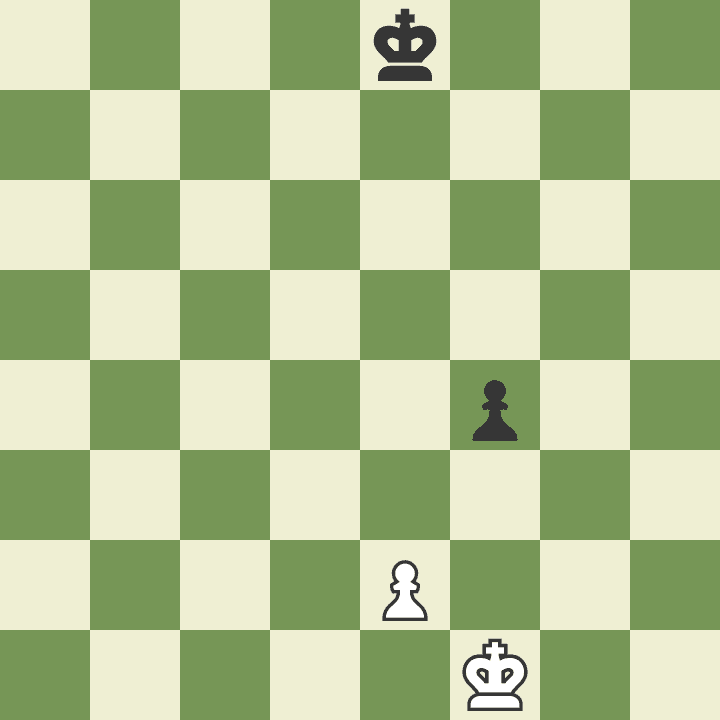
This White pawn has never moved before. Therefore by the initial two move rule, it can move two spaces forward Just like this:
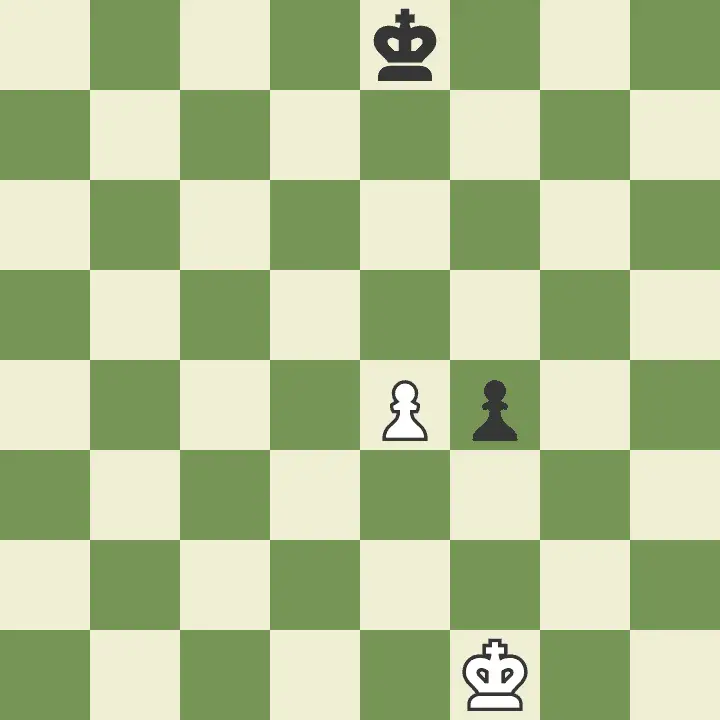
However, this is a mistake. Since the black pawn resides on the side where the pawn has landed. This means that the White pawn can actually be captured. Treating it as if the pawn has only moved one space forward.
Look:
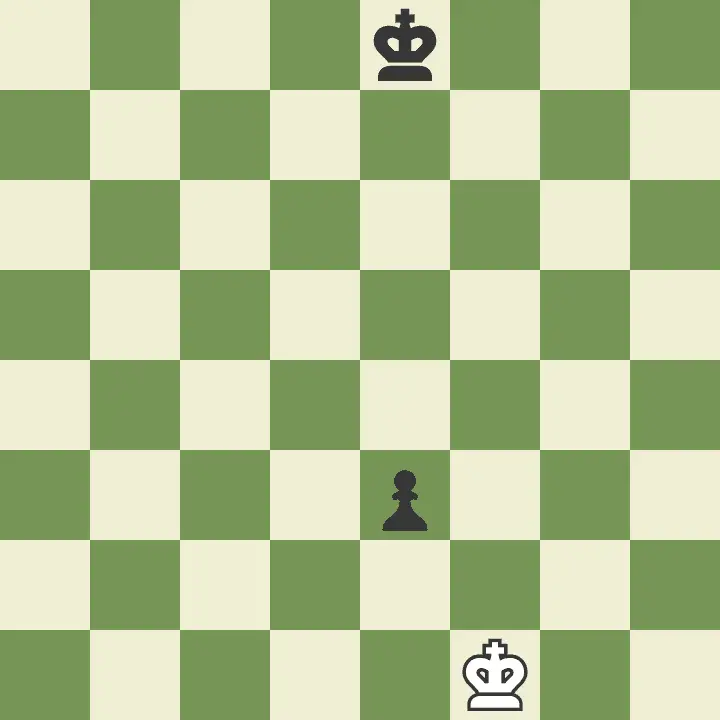
The White pawn is gone Black captured the White pawn as if it only moved one square. Which appears as if the pawn gets captured at its back.
En passant can be performed as long as the conditions are met
There is no limitation to which pawn can actually perform en passant. Take this one:
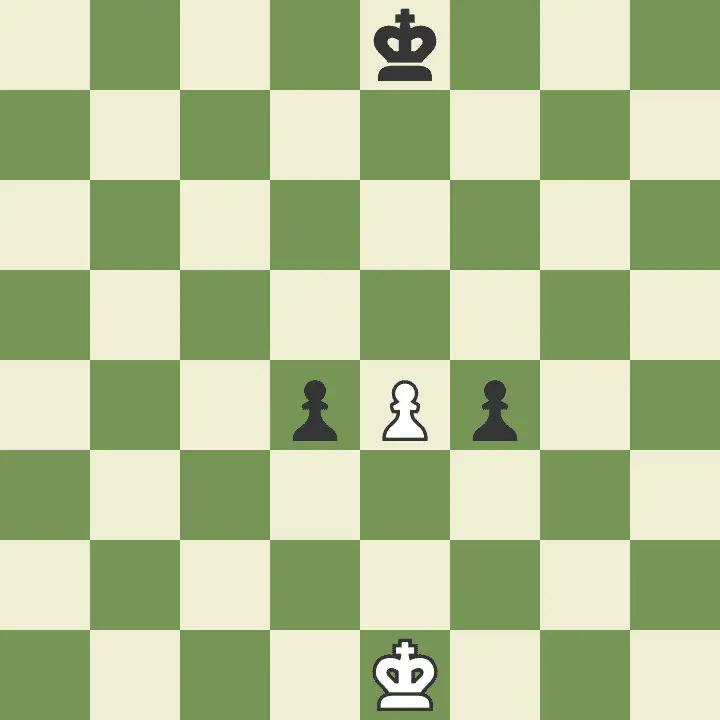
The white pawn that has just made a two-square advance. Both black pawns therefore can capture this pawn There is no rule as to which pawn can capture and which cannot. As long as it’s on the side where the opposing pawn made its two square advances.
But notice how I said in the definition “the particular turn”? What is that?
En passant will expire if ignored
En passant actually expires once the player passed the opportunity on the said turn. Here’s an example:
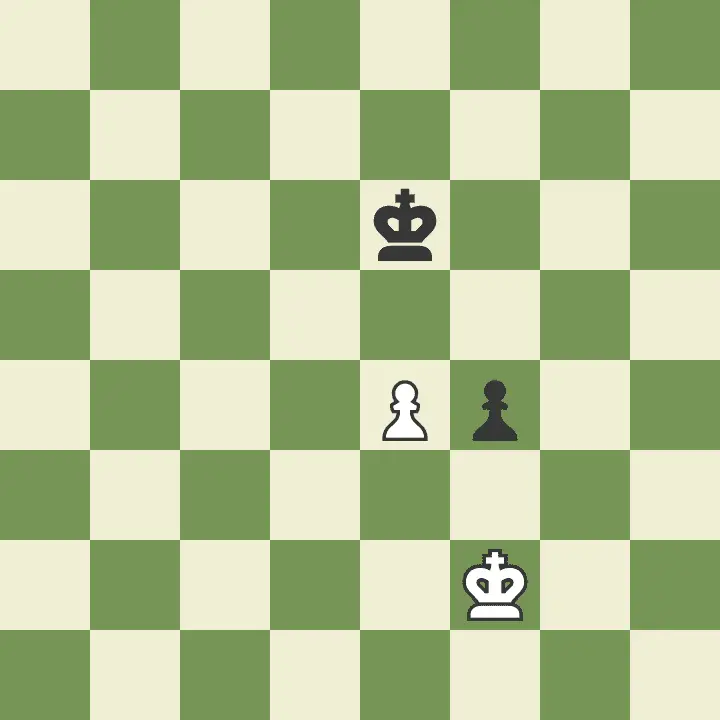
White just moved two spaces forward. The black pawn in this case can capture white en passant. But let’s say black chooses to move the king:
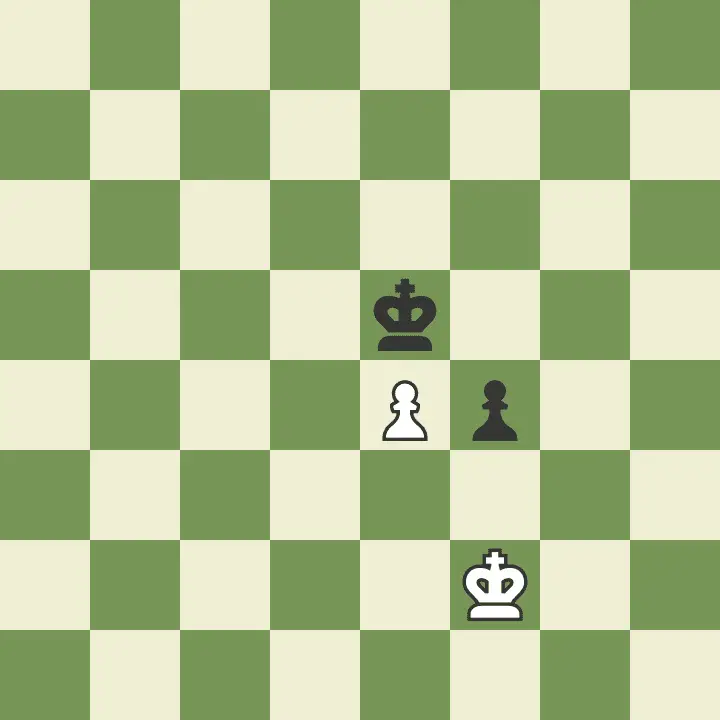
It is now white’s turn to move. White chooses to move his king:
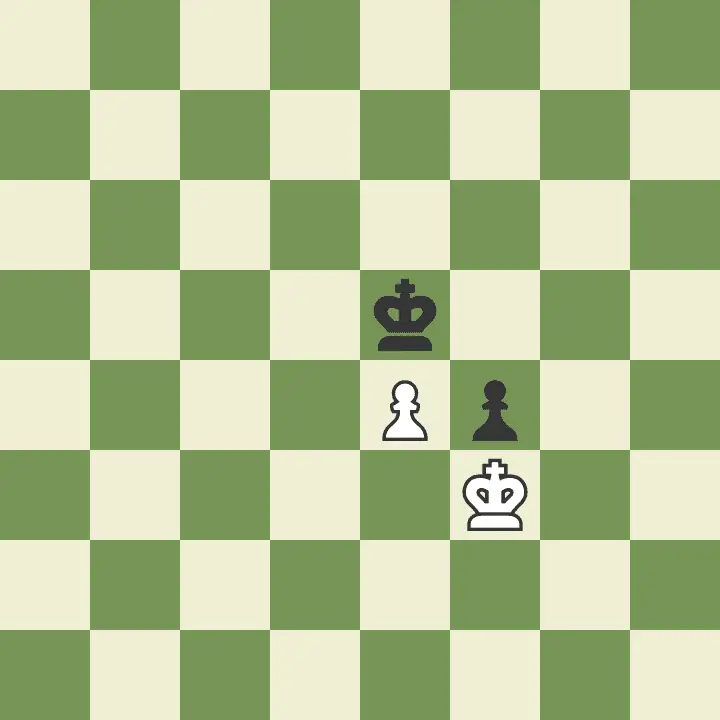
Now, it’s black’s turn again. Can you now capture the pawn en passant? No! En passant can only transpire the moment the opposing pawn made the two square advance. This ability expires if not performed immediately.
En passant can only be performed after the initial two-move option
What if the pawn moved once then moved again? Let’s see this:
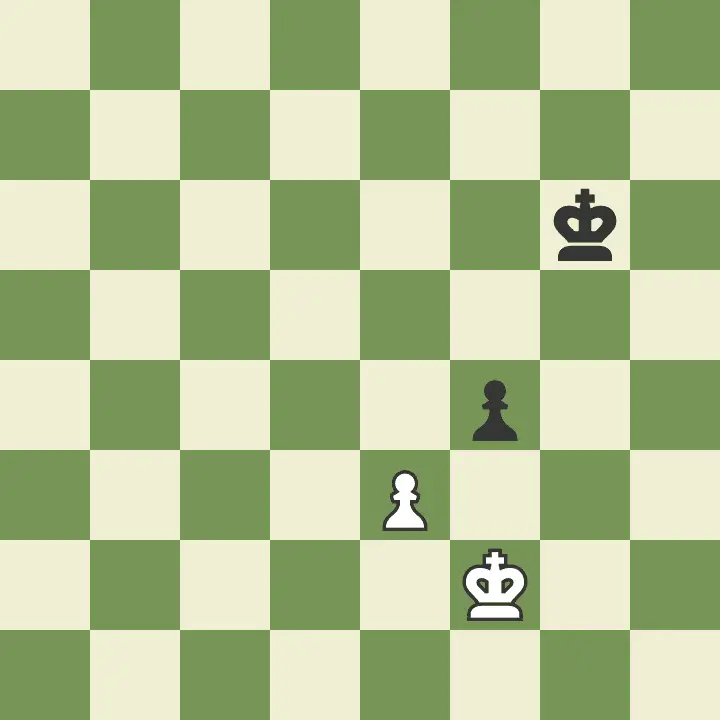
The black pawn here can take the white pawn. Since it is within the pawn’s capture range Let’s say black move the king here:
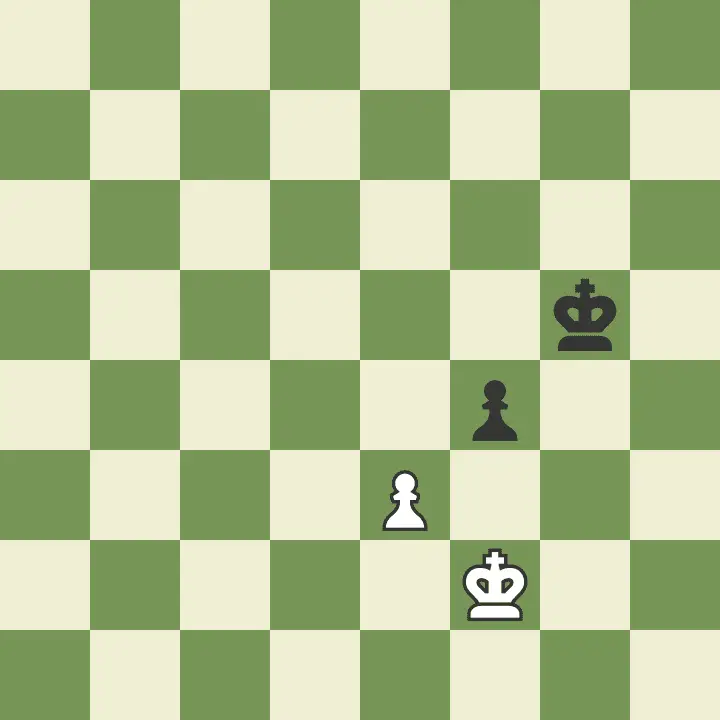
It’s white’s turn again.
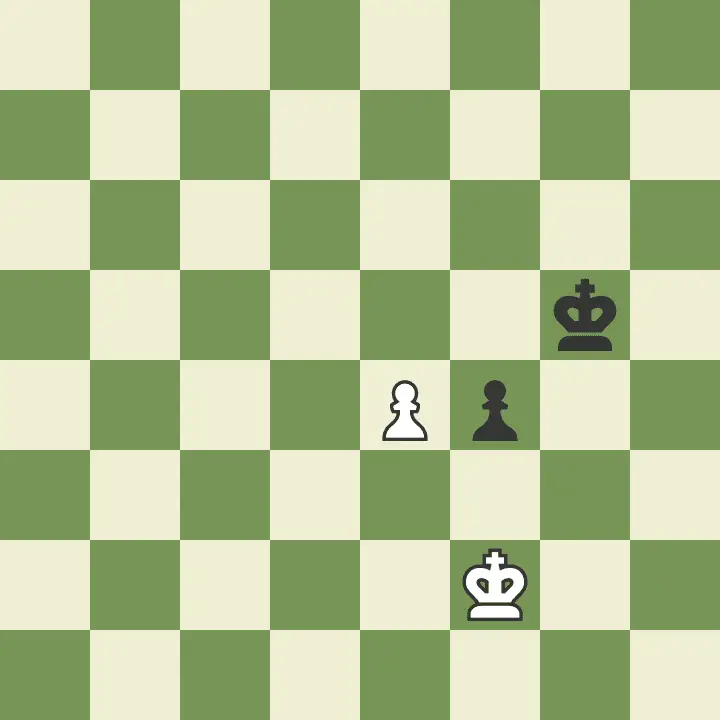
White moves the pawn. The big question is, can black en passant at this position? So, can the black pawn do it? Of course not! Not only that the en passant should’ve expired (if it was possible).
But also because it is not a two-move advance! We talk again and again about how en passant only applies to pawns that have moved to space forward. It does not apply to those who only move one.
So, that’s all you need to know for en passant. But what happens when the pawn actually reached the last area of the board? The pawn after all can only move forward. At the end of the board, the pawn can’t move can it?
4.) Pawns can be promoted to a stronger piece
A pawn that has reached the last rank (horizontal line) of the board has the ability to be converted into another piece.
Essentially when the pawn reaches the opponent’s side of the board. The pawn can be promoted into a higher piece. The big question now would be can a pawn stay a pawn after promotion?
I’ve actually written an article about that in detail which you can find here (will open in a new tab). So, how does the promotion work?
The pawn can promote to a queen
The pawn can be promoted into a higher piece once it reaches the last rank of the board. This means that it is ideal to convert the pawn into the most powerful piece- the Queen.
It is a popular choice for a promotion that it actually has been given a name- Queening.
Take the sample below:
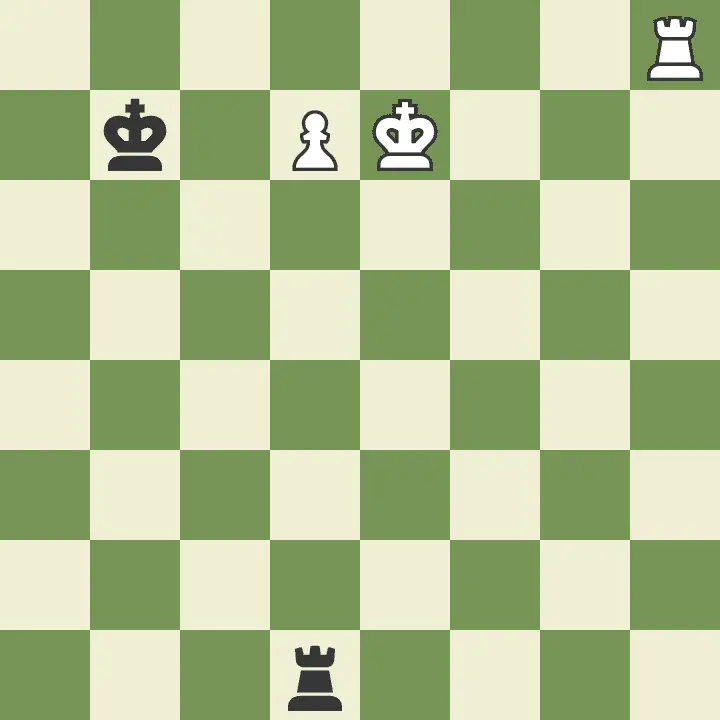
The pawn is about to reach the last rank of the board. It’s now white’s turn to move. Let’s say white pushes the pawn at the last rank. Queening happens when the promoted pawn gets converted into a queen:
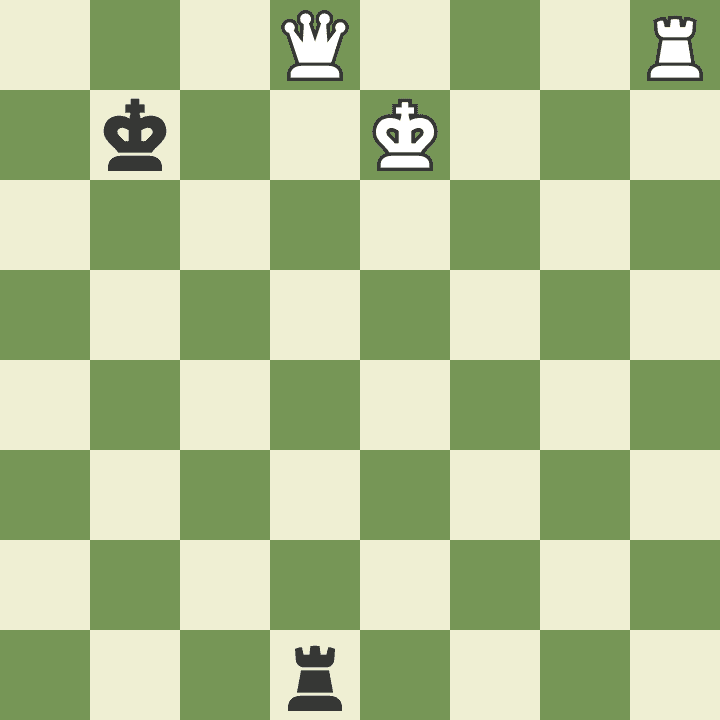
This is ideal in most scenarios but not always.
The pawn can promote to a knight, rook, and bishop
Under promotion occurs when a pawn supposed to undergo promotion gets converted into another piece other than the queen. The act of transforming the pawn into a Queen is called Queening. While an under the promotion is any other piece besides the Queen.
There are cases in chess where choosing the queen is not ideal. Chess after all, is a positional game. The power of pieces is relative to the situation. The reasons for an under promotion can branch into two. That is a stalemate and a check.
Stalemate from pawn promotion
There are positions where bringing a Queen causes Stalemate. A stalemate occurs when a player has no move left, where the opponent’s pieces cover the king’s escape tiles.
The game is declared as a draw. Look at this example:
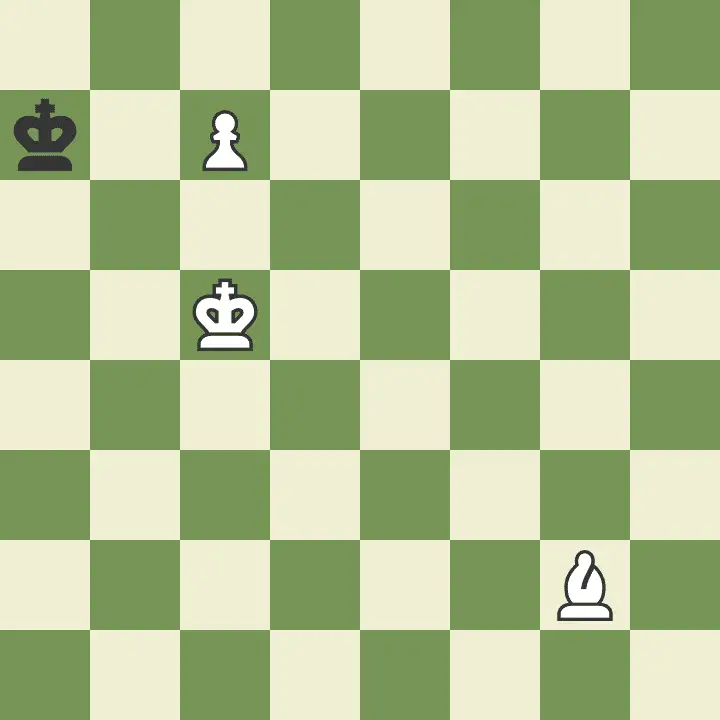
Let’s say the pawn is promoted to a queen here:
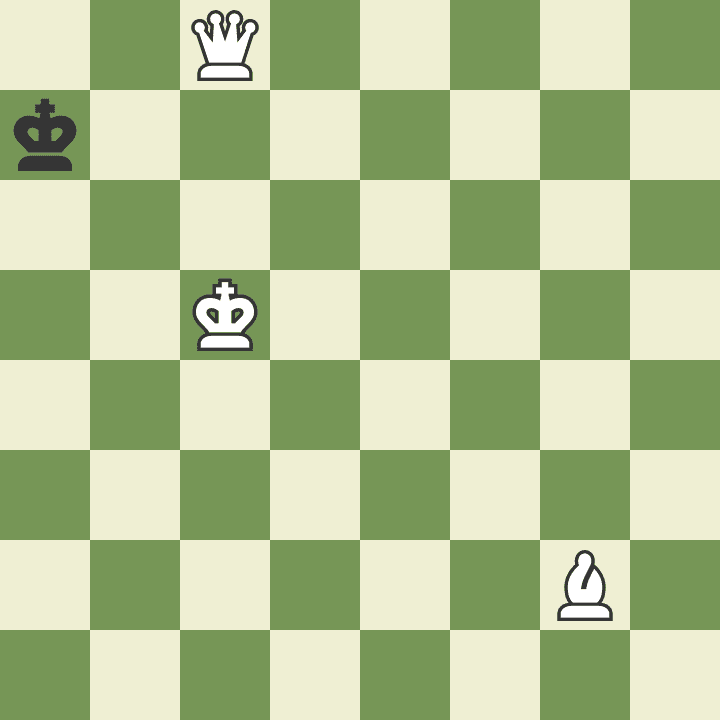
This is a stalemate! Meaning this winning game has just ended in a draw. What about instead if you promote to a rook:
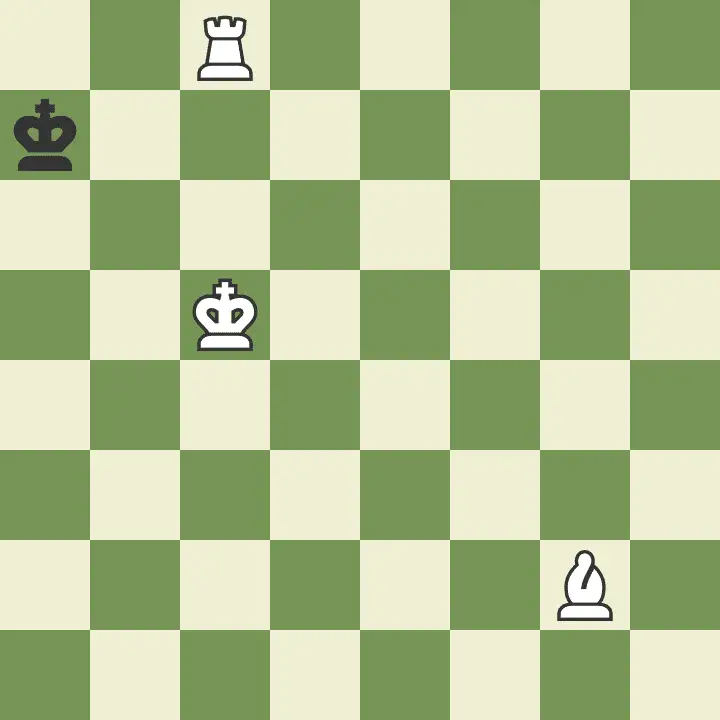
The game goes on! It will only be a matter of time before black gets checkmated. Even though the rook is less powerful than the Queen. The rook is more valuable in this situation as it does not cause a stalemate.
Underpromotion is necessary for immediate checks
Another reason would be time. Bringing up a Queen loses tempo (amount of time to accomplish a particular task). And in situations where time is valuable. It’s better to underpromote a piece that will deliver a check.
Take this one as a sample:
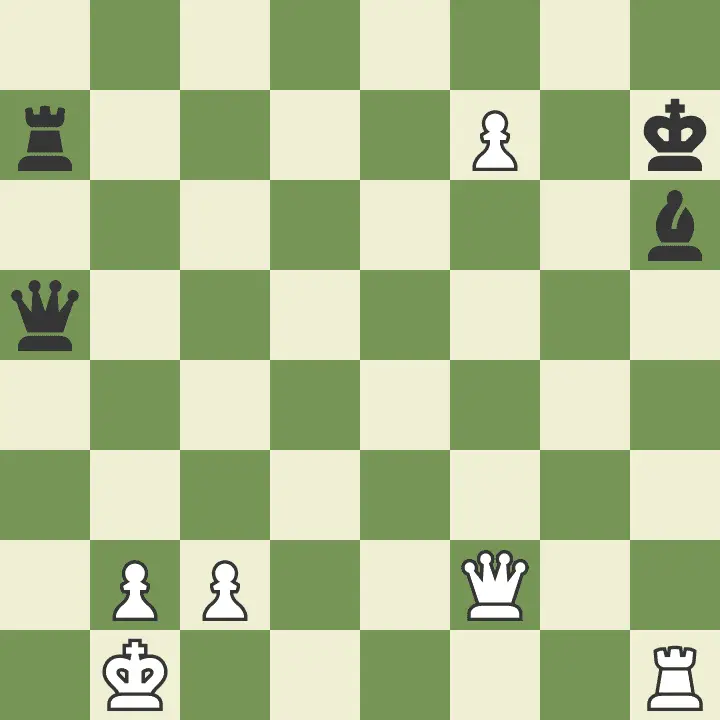
White is about to get checkmated. There are no moves that can defend the checkmate. The pawn can promote, but it wouldn’t prolong the game. Bringing a Queen here would still result in a loss But what if we bring a Knight:
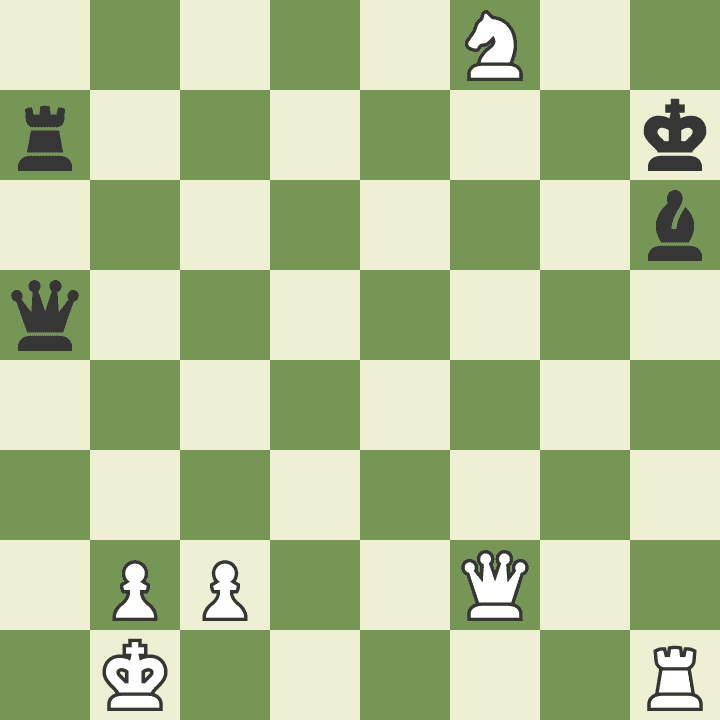
It comes with a check! The black King is forced to react. With correct play, white should have chances here. This opportunity wouldn’t have occurred if a queen was brought instead of a knight. The check is really useful.
That out of the way, is there a limit to how many pieces we can bring through promotion? And can we have as many of them on the board at the same time?
No limit to pawn promotion
There is no limitation to how many pieces can be acquired through promotion. This means that you can have as many queens as you can when managing to get a promotion.
At the same time, there is no requirement belonging to any other piece during a promotion.
I’m talking about the other pieces’ existence. Just because a piece gets captured doesn’t mean the pawn couldn’t promote into that piece and vice versa.
The fact that a piece is still on the board. Doesn’t mean the promoted pawn cannot be converted into the said piece. So yeah, multiple pieces can occur within the board at the same time.
Final thoughts
A pawn is certainly an interesting unit. It is the weakest, but the special rules built around it give it potential for greatness. Knowing this is especially crucial within the early stages of the learning process.
These rules will have a major impact on other aspects of the game, especially the promotion! If you like the content visit the home page for more awesome chess stuff!
